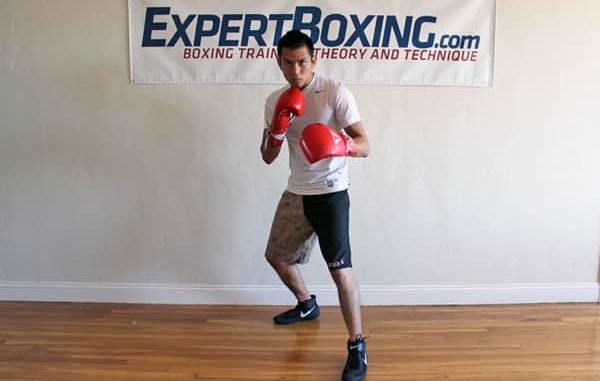
About The Pivot
The pivot is an often overlooked aspect of boxing. The main reason that the pivot is overlooked is that on the face of it the pivot is not a ‘glamorous’ skill. Pivoting does not for instance offer the potential for an explosive end to a contest as does a short-range left hook. Nor does the pivot catch the eye in the same way that evading an attack by using deft slips and ducks can. Therefore, in producing this article (and the associated video) I am seeking to provide unequivocal proof that the pivot is the single most versatile skill that a boxer uses, providing options to confound many an adversary. Here goes…
Below are three examples of pivoting being used during a boxing contest. There are many more, but I think that these examples are enough to win the case and ge you to read on and learn the correct mechanics of the move:
- Facing you is a boxer who closes the ground very quickly and pulls you into a short-range battle. You’re not comfortable and your opponent is extremely strong and powerful, looking to use strength to push you back. Use of the pivot allows you to cancel out the strength of your opponent by deflecting their line of attack without you having to retreat. You are free to unleash short-range shots without having to give way to your opponent’s greater strength.
- You’re competing against an opponent who is supremely talented on the retreat but doesn’t offer the same threat on the front foot. You can attempt to chase your opponent down, cutting off the ring, but you are aware that by doing this you’ll be fighting to your opponent’s strength. So what do you do? You take the centre of the ring, maintaining your position by pivoting to follow your opponent, and you are ready for the inevitable attack; by not attacking your opponent, it stands to reason that he will have to attack you at some point! You are controlling your environment by using the simple pivot.
- You’re fighting on the retreat against an opponent whose primary aim is to back you to the ropes and smash you to within an inch of your life. Given the intensity of your opponent’s attack, you are aware of the potential for this destructive goal being achieved! Solution? Every time you feel the ropes brush against your back, you combine a pivot with a duck and spin away from danger, leaving your opponent to punch fresh air.
I could go on, the options are wide-ranging to say the least. So I’ll assume for now that you are sold on the usefulness and versatility of the pivot and are eager to know exactly how to execute this warrior’s stealth manoeuvre? OK, check out the mechanics and common faults below and let me have any questions via the comments option!
The Mechanics of the Pivot:
To perform this top skill, follow the steps outlined below:
To Pivot to the Left:
From the boxing stance, push from the back foot (right) and allow the front foot to spin on it’s ball. The goal is to shift our baseline (the line from the toe on the front foot to the heel on the back foot) through 45 degrees. The front foot rotates on the spot enabling the back foot to move across to the left. The stance is retained throughout the skill.
To Pivot to the Right:
From the boxing stance, spin the front foot on the spot and allow the back foot to lift. The same shift of 45 degrees takes place, only this time to the right. Don’t be tempted to allow your body weight to go over the front leg, your weight should stay central or on the back leg…as always!
Common Faults with the Pivot
There are very few mechanics executed when performing a pivot. For this reason, the number of commonly identifiable faults are likewise few. In actual fact, there’s only one common fault, but it is common and it is most definitely serious! All elements of the stance must be maintained at all times throughout the move. This means that you don’t step across (with the back foot) and you don’t allow your body weight to transfer to (over) the front leg.
The short-range left hook, the short range right hook are good shots to combine with the pivot. In terms of body movement, check out the duck.
Proudly WWW.PONIREVO.COM
by Fran Sands



